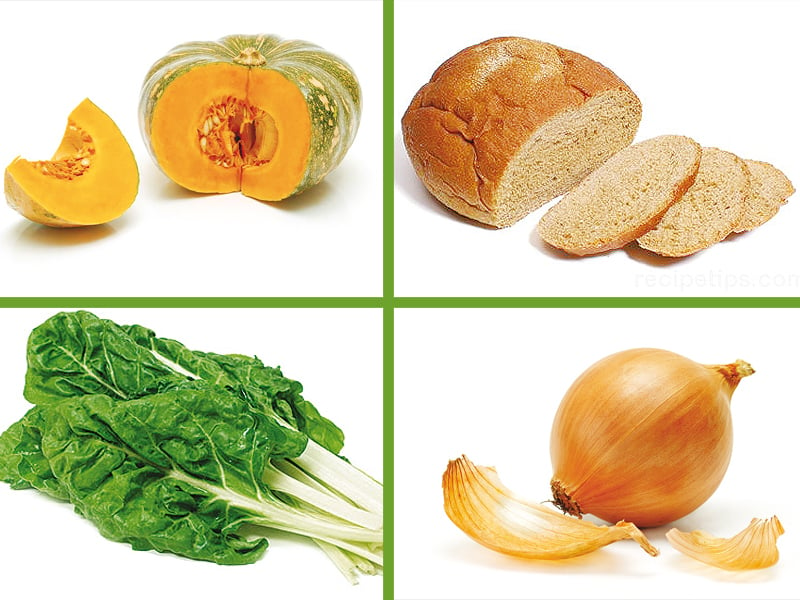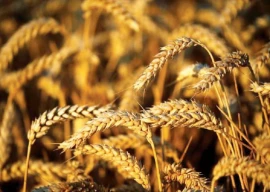
Banana peels

According to a study conducted in 2013, about 40 million tons of banana peels are disposed worldwide each year. Instead of chucking them out, use the peel to polish your leather sofa (rub it against the outer side, then buff with a soft cloth). Heal bruises and scrapes by rubbing the pulp side on the wound to deliver potassium, enabling quicker healing. A 2011 article in Applied Biochemistry and Biotechnology found that banana peels contain many healthy antioxidants like carotenoids and polyphenols, which prevent diabetes, heart disease and cancer. Extra tip: The peels can be easily eaten by blending into a fruit smoothie.
Pumpkin filling

Apart from being used as a popular Halloween prop, pumpkin is filled with antioxidant vitamins A, C, E, exfoliating retinoic acid, and soothing zinc, which make for a perfect face mask. Try concocting two teaspoons of canned pumpkin filling puree with half-teaspoon honey, half-teaspoon milk, and quarter-teaspoon cinnamon and applying the thick paste on to your face and neck. The mixture will exfoliate and provide moisture to the epidermis. Extra tip: For oily skin, add a few drops of cranberry juice to help balance the skin.
Potato peels

The US Census Bureau estimates that the average American consumes nearly 40 pounds of fresh potatoes each year which means more health benefits from the peels! Use unwanted potato peels and pieces for a little pampering—use like spa cucumbers slices, potato will help lighten stubborn, dark circles under your eyes. Enzyme found in potatoes – catecholase, has skin-lightening properties which gives the vegetable the power to lighten freckles and age spots. Extra tip: Cut leftover potato pieces into two thin slices, and place over your eyes or other dark spots for 10 minutes, twice a week to see results.
Stale bread

Leftover stale bread has one of the most surprising of use. Who would have thought aside from making bread crumbs or croutons, you can run stale bread through your spice or coffee grinders to remove any leftover odors or residue. If you have smudges or marks on the walls—even crayon— wipe the spot with a soft cloth, and then rub semi-stale bread against it. The sponge-like texture will work like a store-brand cleaning eraser. Extra tip: Before rubbing the bread-slice over the stained area, make sure to remove the crust for a smoother and more affective wipe-out.
Onion skin

A 2011 study found that in the EU alone, 500,000 tons of onion waste is thrown away each year. Recent research from the Plants for Human Health Institute at North Carolina State University confirms that flaky wrapping around onions is rich in nutrients, like quercetin, a plant pigment that can prevent arteries from blockage, lower blood sugar, and reduce inflammation. Even though the skin isn’t edible raw, you can still reap the health benefits. Extra tip: Add onion skins to broth while cooking soups and stews but remember to remove the skins before serving.
Expired olive oil

Olive oil which might have lost its taste and has started to smell bad can be freshened up with many uses. Dab a bit of the oil on the teeth of a zipper that just won’t shift. With the help of a cotton ball, wipe off eye makeup without any hassle or skin irritation. Rub into the leaves of potted plants to make them look healthier and shinier - works for both natural and artificial plants. For pet owners, massage oil into your dog’s paws to relieve cracking or pain. Extra tip: With the help of cotton cloth use expired olive oil to polish your shoes.
Swiss chard stalks

Swiss chard leaves are a Mediterranean cooking essential, but usually we are quick to dispose its somewhat-bitter stems. According to researchers, a German study found that the stems are full of antioxidants and glutamine, an immune system-boosting amino acid that helps the body recover from surgery and wounds. You can load-up on Vitamins A and C and very few calories by blending the leaves and stalks into a dynamo green smoothie. Extra tip: Munch on swiss chard leaves and stems by cutting into one-inch cubes, roasting for 20 minutes, and seasoning with lemon juice, chopped garlic, salt, and pepper.
Published in The Express Tribune, February 7th, 2015.
Like Life & Style on Facebook, follow @ETLifeandStyle on Twitter for the latest in fashion, gossip and entertainment.





















1714024018-0/ModiLara-(1)1714024018-0-270x192.webp)

















COMMENTS
Comments are moderated and generally will be posted if they are on-topic and not abusive.
For more information, please see our Comments FAQ